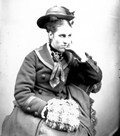 |
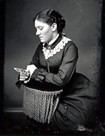 |
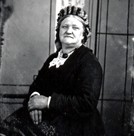 |
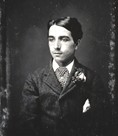 |
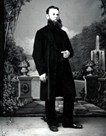 |
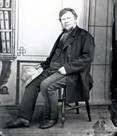 |
PHOTOGRAPHIC PORTRAITS
FROM THE PAST
by Rex Needle
 |
 |
 |
 |
 |
 |
PHOTOGRAPHIC PORTRAITS
FROM THE PAST
by Rex Needle
|
A COLLECTING CRAZE which spread through the world during Victorian times was known as cardomania, the urge to amass a large number of personal photographs mounted on small cards, a process which first appeared in France in 1854. They were known as carte de visite and although slow to gain popularity, the appearance of Napoleon III’s portrait in this format in 1859 heralded an unprecedented demand and made them a phenomenal success which was sealed with the appearance of another showing Queen Victoria. The cards usually measured 4in. by 2½ in. although there were larger variations. They soon became enormously popular and were traded among friends and visitors, the fashion spreading throughout Europe and then to America and albums for their collection and display became a common feature in most Victorian homes. Photographers were quick to take advantage of the commercial possibilities of the carte de visite and soon their studios were busy turning out portraits for anyone who could afford a sitting, each accompanied by their trade name engraved in an ornamental script on the reverse. Stiff and starchy some of the sitters may have been, but their likeness, as it was known, was there for posterity. Many of those taken of Bourne people have survived, mainly the work of our leading photographer from past times, William Henry Redshaw (1856-1943). Although brought up in the family’s saddlery business, the occupation did not appeal to him but photography did and in 1874, at the age of 18, he decided to set up his own studio, using his father's premises adjoining the Six Bells public house in North Street, now demolished. Business became so successful that he soon needed larger premises, moving to No 37 North Street where family members assisted in his other ventures of selling garden furniture, seeds, flowers and even music. But photography remained his main occupation and it is this for which he is best remembered, even inventing a portable dark room to cater for the growing popularity of home photography among the more affluent citizens. When he began in business, photography was still in its infancy and regarded by most people as little more than a passing fad, but his studios were an immediate success. Landscapes, buildings and street scenes were among his subjects but Redshaw realised the potential of portraiture and despite the cost involved, people were soon flocking to his studio to have their picture taken for the new carte de visite. This was a highly organised occasion, by appointment only, and an hour long session requiring a high degree of patience, both from the photographer underneath his black sheet and from the sitter, arriving dressed for the occasion in their Sunday best and posing against backdrops of fruit, flowers and trees. After each sitting, Redshaw would retire to his purpose built darkroom to develop his plates and print the results which could be collected a few days later. There were of course enlargements for the family album but the main objective was to produce a number of cartes de visite to be presented on special occasions as a memento of a precious encounter. They exuded sentimentality and put the sitter at their most attractive, whether male or female, with the latest fashionable items from their wardrobe, moustache waxed, bow tie exact, a hat properly pinned, hair in fashion with ribbons to match the new dress and children on their best behaviour. An appointment with the photographer was an appointment with vanity and William Redshaw soon learned how to flatter his clients. Portrait photographs became his speciality and those who could afford to have their likeness taken for a carte de visite included many unattached young ladies and gentlemen to improve the prospects of finding a husband or wife for a happy and successful marriage. The giving of a photograph to a male friend implied an acceptance that the relationship was a serious one and might eventually lead to the altar and Redshaw did his best to present the young ladies in the most favourable light. The charm of the age was also reflected on the reverse of the cards which were used for advertising the photographer’s skill and the design of these name plates were an art in themselves. These cards are now very collectable and rare examples fetch high prices in the saleroom and they remain a reminder of the manners and mannerisms of Victorian England. The cartes de visite were also the starting point for many talented photographic artists whose names have become a byword in the history of the camera. Fortunately, we are able to see examples of Redshaw’s work because a set of proofs has survived, taken more than 100 years ago but lost after his death in 1943. The glass negative plates used in the photographic process were subsequently discovered by the late Peter Sellars who ran a business as a florist and nurseryman from the photographer’s former premises at No 37 North Street. They were copied and preserved by the late Martin Frisby-Boor, chairman of the Bourne branch of the Lincolnshire Family History Society, and after he died in 2005, they were passed on to the Heritage Centre for safe keeping and from them I have compiled this small collection of local young ladies and men, and others showing sitters of more advanced years whose pictures were probably taken for the family. Some of the names are of familiar Bourne families but others are quite unknown and often the spelling is inaccurate as the filing was probably done by an untutored apprentice and so we do not know who they are. But the gallery of faces have expressions that suggest a stoicism typical of the period, reflecting either a belief in the jingoism of the age that Britain really did rule the waves or perhaps the very act of having their likeness recorded by the new technology frightened the life out of the sitters. |
NOTE: This article was published by The Local newspaper on Friday 9th August 2013.
Return to List of articles